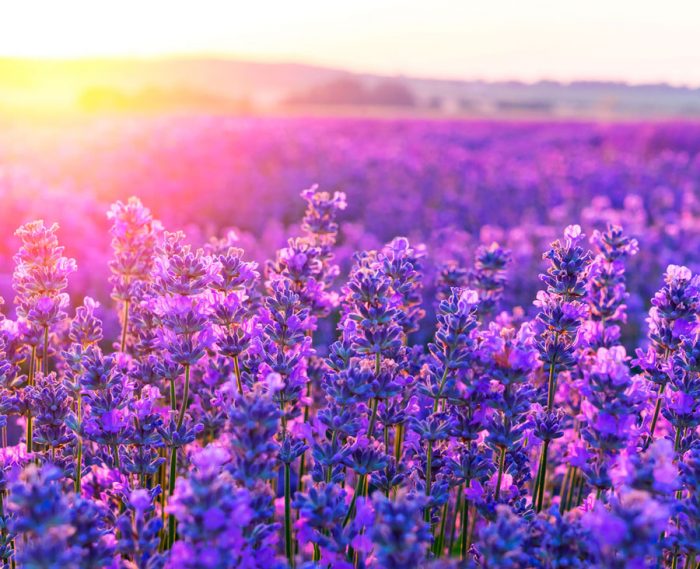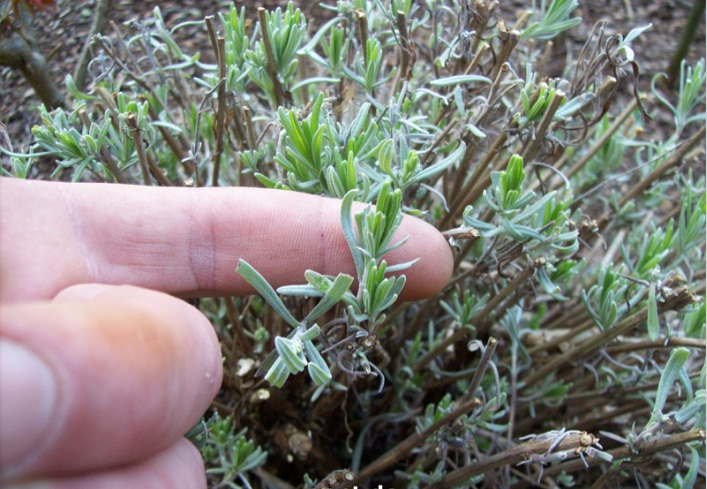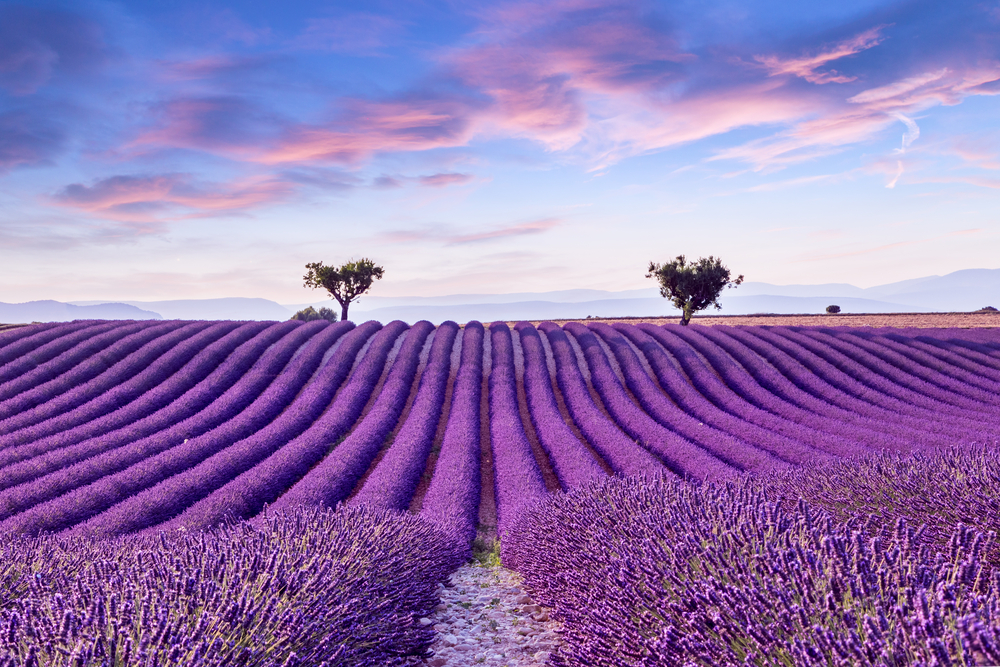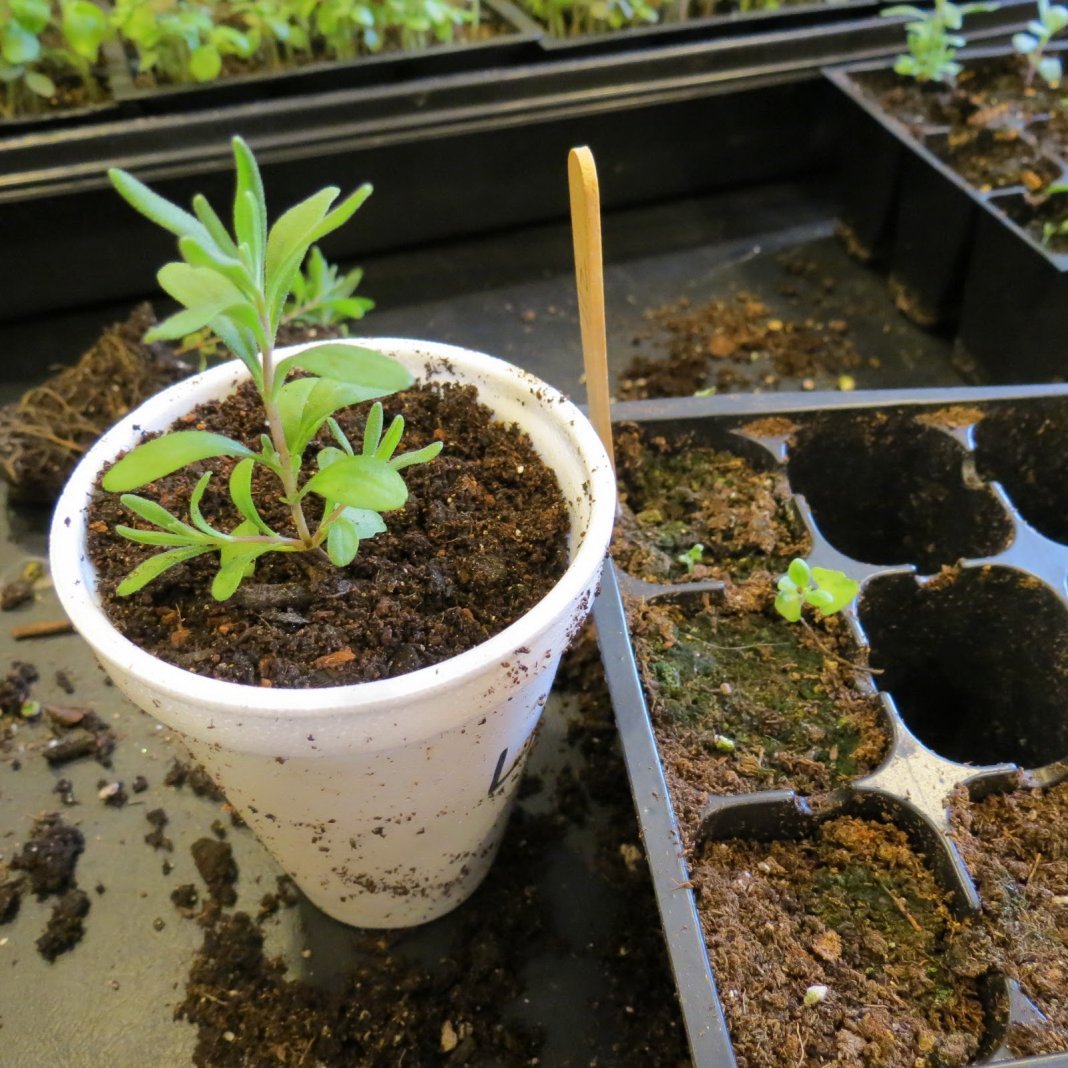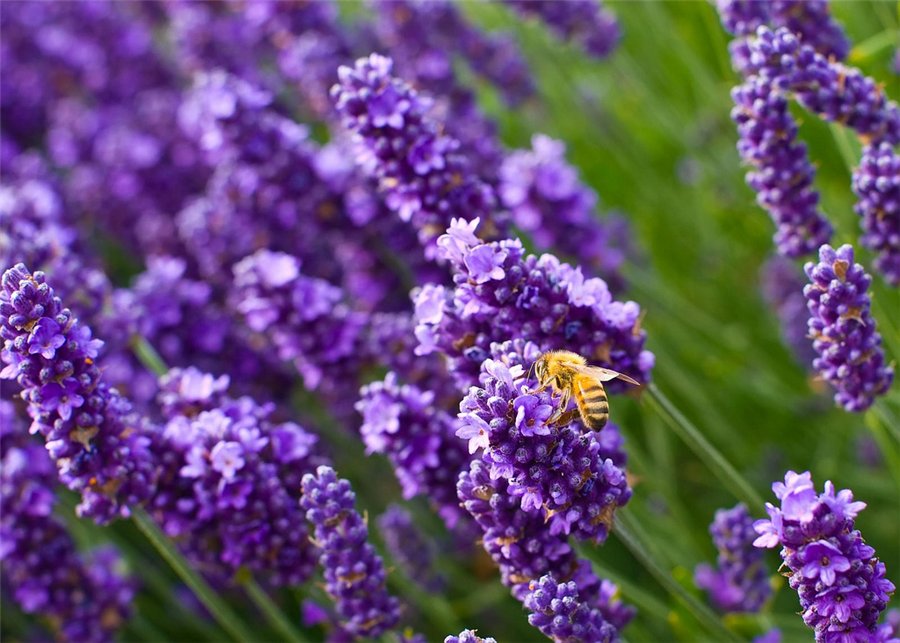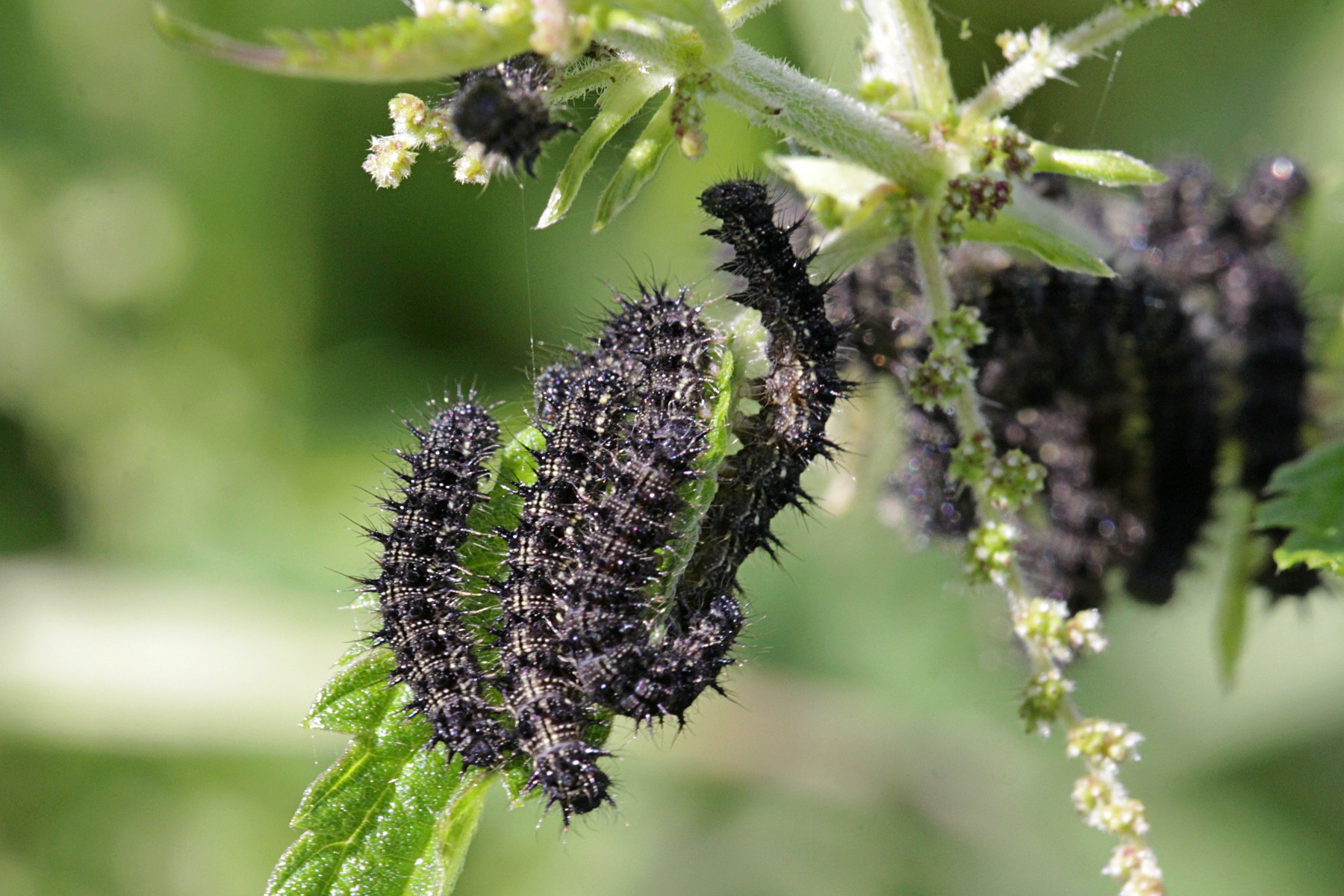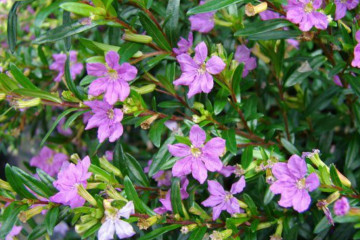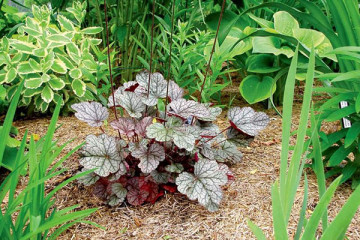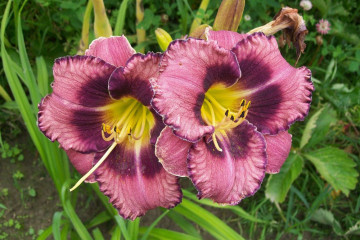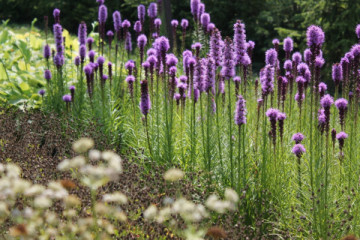Lavender - planting and care outdoors
Content:
Lavender is an ornamental perennial medicinal plant with a sophisticated summer scent. Due to its graceful shape and bright dark blue flowers, it is often used to beautify curbs and alpine slides. At the same time, planting lavender and caring for it requires specific knowledge and skills, without which it will be difficult for a flower to please its owners with lush flowering.
What does lavender look like?
Lavender belongs to the Lamiaceae family. The average height of an evergreen shrub varies within half a meter. The flower can be either annual or perennial. It has a straight felt stem with slightly curved edges. At one of the ends there are narrowish light gray or bluish-purple flowers, slightly resembling spikelets.
Common varieties
In total, about 20 types of lavender are read. The most popular ones are:
- English narrow-leaved. Excellent for cultivation in the Russian climate. The flower is able to withstand significant temperature fluctuations. The plant can withstand 25-degree frosts normally. The height of the bushes ranges from 15-60 cm. Refers to medicinal plants. Varieties included in this species: Alba, Sentiva Silver, Munsted, Rosea, dolphin, Hidcote, Sentiva Blue.
- French broadleaf. This species tolerates wintering very hard, therefore it is not recommended for cultivation in the conditions of the Middle Lane. The most acceptable option is to cultivate a flower in a pot. With the onset of the cold period, the pot should be brought into the house. This type of lavender is grown at a temperature not lower than −10 ° C. Varieties included in this species: Helmsdale, Tiara, Rocky Road, Regal Splendour, Willow Vale.
- Toothed. This species is not able to withstand low temperatures, therefore it should be grown in warm climatic conditions or indoors (in the country or at home). It is considered an exclusively decorative type. The most popular varieties are Royal Crown (purple), Pedundulata (pink) and Regal Splendour (dark purple).
Briefly about the history of appearance as a garden plant
The word "lavender" itself has Latin roots. Part of the name "lava" means "wash". In ancient times, lavender was a revered plant, used for washing and washing, and as a component of a sedative. Today, the flower is actively used in cooking, oil production and landscape design.
Features of caring for lavender in the garden
Lavender is a demanding flower, but with proper care it can please its owners with lush flowering.
Lighting: shade-loving or light-loving
Lavender is a very light-requiring plant. However, in partial shade conditions, for example, under fruit trees in the garden, the flower will also be able to develop normally.
Watering and humidity
Watering should be done in the morning or in the evening. The best option is water at room temperature boiled or separated for several days. The plant does not like waterlogged soil, so the flower should not be poured. After 25-30 minutes. after each watering, you should get rid of the remaining liquid from the pan, and also loosen the soil twice a week after the procedure. It is undesirable to use wooden sticks or pegs, the tool must be plastic.
Spraying and other preventive measures
Lavender can tolerate dry air in a heated living space, however, to prevent pest infestation, foliage should be sprayed from time to time. When a weed appears, it is immediately removed. For prevention, it is recommended to mulch (with peat). Lavender also needs hilling, which should be carried out at least once every 6 months (in autumn and spring).
Priming
Lavender is not very demanding on the mineral composition of the substrate, but moist and heavy soil is definitely not suitable for it. The best option is light sandstone or sandstone. If the soil turns out to be heavy, then it should be mixed in equal proportions with sand (river). You also need to take care of the drainage layer, which includes expanded clay, broken brick and sand.
Fertilization and feeding
The quality and quantity of dressings significantly affect how lavender grows and develops, so the procedure for fertilizing a flower should not be ignored. Top dressing is recommended in the spring. The best option is to feed the plant with nitrogen fertilizers. To prepare the fertilizer, it is necessary to dilute urea (1 tablespoon) or sodium humate (2 tablespoons) in water (10 l). About 5 liters of solution will be enough for one bush.
How and when to trim
One pruning per year will be enough for the plant, which will allow the bush to grow, and the shoots to woody. Long-term experience suggests that this procedure should be carried out immediately after flowering ends - in the second half of July. The advantage of summer pruning is that lavender can grow a sufficient amount of fresh, compact and beautiful green mass in a short time.
Since the plant blooms only in the summer, it is allowed to cut the bushes in the spring, when the frost ends. The recommended cutting rate is 2 times a year. The first procedure will stimulate flowering, and the second will ennoble the bush.
For curly spring pruning, it will be enough to shorten the tips of the shoots by a third, to give the plant a semicircular shape. In the summer, it will be necessary to remove the peduncles and 2-3 upper pairs of leaves.
When and how it blooms
Due to its long flowering period and bright fragrant flowers, lavender is often used when creating landscape compositions. Many gardeners opt for this crop precisely because of the lush and long flowering.
Types of flowers
French lavender flowers can be purple, lilac, pink, burgundy, green or white. English has blue, purple, green, pinkish or white flowers on thin, straight peduncles. For the jagged species, purple or purple-pink flowers are more characteristic.
Flower shapes
Lavender flowers are usually small, bisexual, clustered in interrupted, spike-shaped inflorescences. Quite large oblong flowers can also be found, it all depends on the variety and growing conditions.
Flowering period
On average, lavender blooms for about two months. The French species blooms from April (May) to July. At the same time, at the end of August, the plant blooms a second time. The flowering period of English lavender is July-August.
Changes in care during flowering
Many growers are wondering how to care for lavender during the flowering period. In fact, care should be taken at this time in a standard manner. At the same time, pruning is not recommended, since in most cases it is done after flowering.
How to propagate lavender outdoors
Reproduction by cuttings is considered the most affordable and simplest way. However, this option is not always suitable, so some growers resort to germinating lavender from seeds.
Germinating seeds
Planting, growing and caring for lavender outdoors is not easy, especially if you propagate the flower by seed. To properly propagate lavender seeds, you must:
- In early March, place the seeds in the refrigerator (in the bottom drawer).
- In May, take them out of the refrigerator and sow in open ground.
- Cover with lutrasil and monitor the soil moisture level. It is necessary to regularly moisten the soil, make sure that it is not dry.
- The shelter can be removed after the seedlings are sufficiently strong.
If the site where the seeds are sown is located in a region with a warm climate, then sowing should be done in October at a depth of 0.5 cm. Severe frosts are dangerous for lavender, so it is advisable that the temperature at the planting site is not very low. When snow falls, the crops must be well covered. The first shoots can be expected in late spring - early summer.
Rooting cuttings
This is the fastest and easiest way to reproduce. To root cuttings, you must:
- Cut annual shoots into pieces 8-10 cm long.
- Transplant the resulting cuttings into a loose, moist substrate. Cut the lower part and deepen it 2-3 cm into the ground.
- Place inverted glass jars on top.
- After the roots grow back, the banks are removed.
In addition, there are others capable of breeding lavender:
- dividing the bush;
- reproduction by layering.
Lavender: planting and care outdoors
How to plant lavender outdoors? Transplanting lavender into open ground is a responsible process. In adulthood, a large number of movements do not have the best effect on the plant. Therefore, the procedure must be performed with special care and only if the earthen lump is large enough.
Transplanting young flowers is a little easier. When transplanting bushes grown from cuttings, seeds or cuttings, you must take care of the planting site in advance. Adjacent specimens should be seated at a distance approximately equal to their height. This will allow the bushes to be as lush as possible.
Potential problems in growing lavender
Sometimes, due to improper care, lavender can be exposed to diseases or become the prey of pests.
What leaves problems say
Lavender is a fairly drought tolerant plant, so it can suffer from overflow. The main symptom is yellowing of leaves, shoots and root rot. In addition, foliage can change color and dry out due to illness.
Frequent illnesses
Most often, the flower affects late blight, the symptoms of which are manifested in the form of browning, the death of part of the shoots and the appearance of rot at the base. In this case, the plant should be sprayed with Biosept 33 SL (0.1%) or Aliette 80 WP (0.2%), or water the flower with Previcur 607 SL (0.2%) or Previcur Energy 840 SL (0, 2%).
Pests
Most often lavender suffers from an attack:
- aphids;
- caterpillars;
- slobbery pennies. The pest is not capable of causing serious damage, but as a result of the activity of the insect, the stems and leaves can change their usual shape;
- chrysanthemum nematode. The result of the activity of the nematode is small dark specks on the leaves, which lead to their partial drying out.
In addition, it is worth making sure that there are no weeds near the flower. It is in loose soil that they develop especially actively, oppressing the cultivated plant.
Lavender has a vibrant appearance, lush bloom and an amazingly sophisticated scent - a full complement of qualities that make flower lovers respect and honor this culture. And the color compositions with the participation of lavender in the garden and vegetable garden make this flower an irreplaceable component in the images created by landscape designers.
